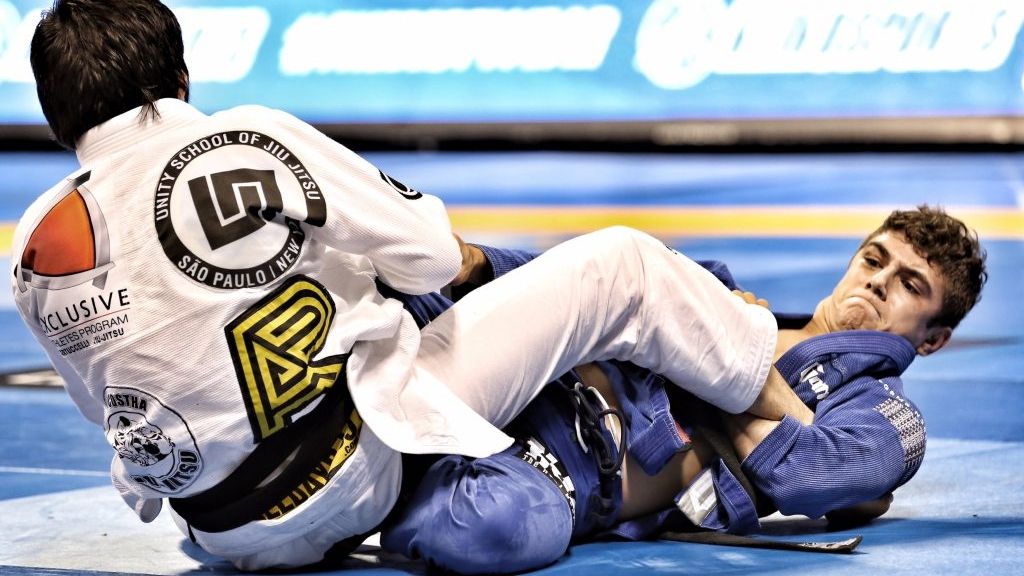Guest post by Evolve MMA, Asia’s premier championship brand for martial arts. It has the most number of World Champions on the planet. Named as the #1 ranked martial arts organization in Asia by CNN, Yahoo! Sports, FOX Sports, Evolve MMA is the top rated BJJ gym in Singapore.
Due to their successful use by some of grappling’s highest-profile athletes, leg locks are more popular than ever. Traditionally frowned upon by many BJJ practitioners, both gi and no-gi grapplers have come to appreciate the benefits of a solid leg lock game. In order to help get you started with leg locks, below is an overview of the primary positions from which they can be applied.
Ashi Garami
Ashi garami, also known as the single leg x-guard, is often the first leg lock position that BJJ students learn, and it is typically the starting point in most leg lock attack systems. Meaning “leg entanglement” in Japanese, this position involves using one’s legs to isolate and attack an opponent’s leg. For example, when attacking the left leg of an opponent, the right foot is placed on the opponent’s hip, which allows the attacking student to create tension and prevent the opponent from closing the distance. The left leg is then placed between the opponent’s legs, enabling the attacking student to squeeze his knees together and successfully control the opponent’s leg. There are a number of leg locks available from this position, including heel hooks, straight ankle locks, and toe holds.
Outside Ashi Garami
The outside ashi garami is considered to be an “outside lockup” because it involves placing both feet outside of the opponent’s legs. Outside lockups provide better control than the standard ashi garami position, but they leave the feet open for counter leg attacks. Both the standard ashi garami and outside ashi garami are favored by BJJ students due to their legality in most BJJ competitions. The outside ashi garami is nearly identical to the standard ashi garami, the only difference being that both of the attacking student’s feet are placed outside of his or her training partner’s legs. The outside ashi garami provides excellent control of the leg being attacked and provides opportunities for straight ankle locks, heel hooks, toe holds, knee bars, and other techniques.
The 50/50 Guard
Another outside lockup, the 50/50 guard is similar to the outside ashi garami, the only difference being that the opponent’s leg is passed across the attacking student’s body. When the 50/50 is achieved, both students’ legs are placed in the same position, giving both grapplers equal offensive and defensive options. The 50/50 is an excellent position from which to attempt the inverted heel hook submission, which is an extremely efficient and powerful technique. In addition to the inverted heel hook, the 50/50 provides opportunities for straight ankle locks, toe holds, and other options. However, due to the nature of the position, one must be aware of counter attacks by the opponent.
Inside Sankaku
As opposed to the outside lockups described above, inside lockups involve placing both legs between the legs of the opponent. Inside lockups are considered superior to outside lockups because they provide superior control and eliminate the threat of counter leg attacks. A highly effective inside lockup is the inside sankaku, which is also called the honey hole, 4-11, saddle, and top rock. The inside sankaku is similar to the 50/50 in that the opponent’s leg is pulled across one’s own body. However, unlike the 50/50, the attacking student’s leg is positioned over the leg that he or she is attacking and under the opponent’s outside leg. In this position, the attacking student’s opposite leg is hooked under the opponent’s outside leg. The inside sankuku provides all of the offensive options of the 50/50 guard but allows opponents very few attack options. The most popular attack from this position is the inverted heel hook, however, there are multiple other submissions available from here as well.
The Leg Knot
The leg knot, also known as the game over position, is a highly effective position from which to perform a variety of leg attacks. In order to attain this position, the attacking student’s left leg is placed over his or her opponent’s right leg and under his or her opponent’s left leg (or vice versa). The attacking student’s right leg is then hooked over the shin of his or her opponent’s left leg. From this position, the attacking student has complete control over both of his or her opponent’s legs and is free to attack with heel hooks, ankle locks, toe holds, and hip locks. The only option the opponent has in this position is to attempt to untie the leg knot. However, this is extremely difficult to do and gives the attacking student ample time to attempt submissions. If this position is achieved, the submission is nearly a foregone conclusion, hence the name “game over.”

















